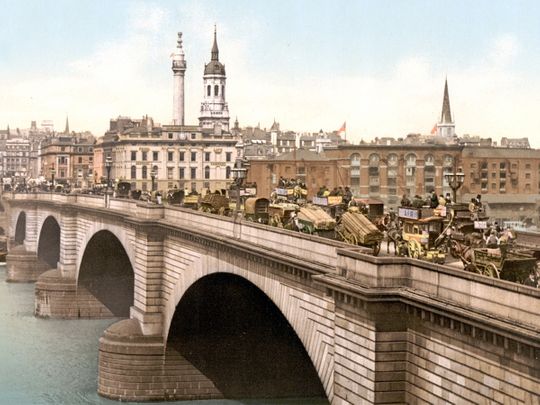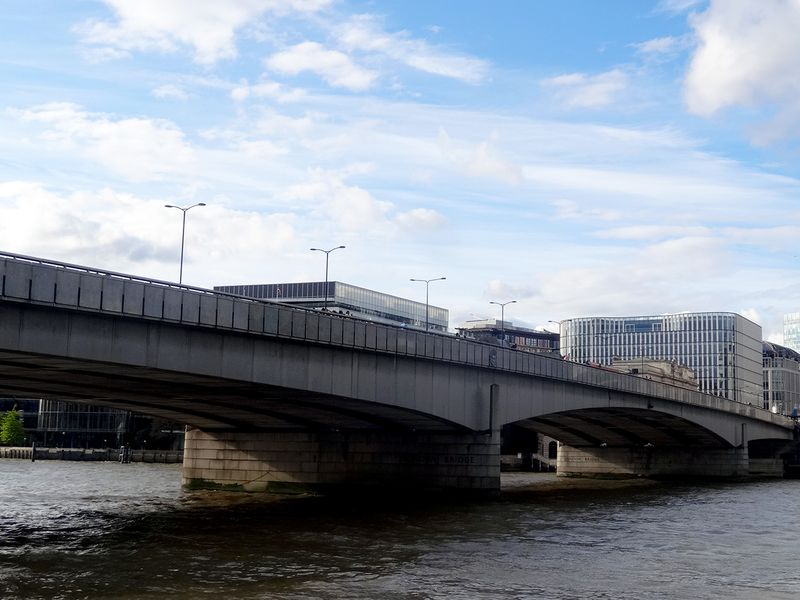
Perhaps every playground since the 18th century carries trace memories of this play. Pairs of children stand with their hands clasped in an arch to trap a fellow playmate passing under the ‘falling London Bridge’. There’s some truth to this old rhyme – the bridge fell multiple times in its turbulent history.
Click start to play today’s Crossword, where dams, tunnels, bridges and canals of the world rule.
For the longest time, London Bridge was the only link between the city and Southwark (central London) over the River Thames, until Putney Bridge opened in 1729. Different forms existed and dismantled over centuries, probably owing to the fact that all its predecessors were made of inflammable timber since Roman London.
We look at dramatic instances of the famous bridge coming undone, and how it was untiringly rebuilt.

Roman bridge
One of the first supposed instances of the bridge going up in flames was during the Londinium massacre by the fierce Celtic queen Boudicca of the Iceni tribe. Her revenge-fuelled revolt against the Romans saw 70,000 inhabitants wiped clean and the razing of three cities, including the pontoon bridge.
Saxon bridge
When the structure was reconstructed, it fell again in a battle tactic by the Norwegian King Olaf against the Danes in the year 1014. In ‘Heimskringla’, Icelandic historian Snorri Sturluson recorded Olaf’s commands to sail upstream, fasten ropes around the piles of the wooden bridge, and then sail his vessels downstream to take the armed Danes down in one fell swoop.
Old London Bridge

After the London Bridge took recurrent damage from floods, the London Tornado of 1091 and some more fire, one man had it, it seemed. Peter, a priest and chaplain of St. Mary’s of Colechurch, took it upon himself to build Britain’s first stone arch bridge. The Old London Bridge had 19 pointed stone arches and a wooden drawbridge, all of which took 33 long years to construct.
Just three years after its completion in 1209, flames from the Great Fire of London partly destroyed Peter’s bridge. What’s most interesting about this period of history is that some 500 people called the bridge their home. Income from the leased houses and shops helped King John maintain the structure, until continuing fires forced the city to demolish the buildings in 1761.
New London Bridge
Predecessor to the present structure, the New London Bridge replaced Peter’s high-maintenance one in 1832. Renowned engineer John Rennie took over with a new design, and his bridge saw 130 years before giving under the weight of growing automobile traffic. It was sinking into the Thames at a rate of three centimetres per year.
Lucky for London’s city council, Lake Havasu City founder Robert P. McCulloch bought the sinking bridge, which still sits in Arizona, United States. Funds from this sale gave London its current concrete bridge.
Have you ever crossed the famous London Bridge? Play today’s Crossword and tell us at games@gulfnews.com.




